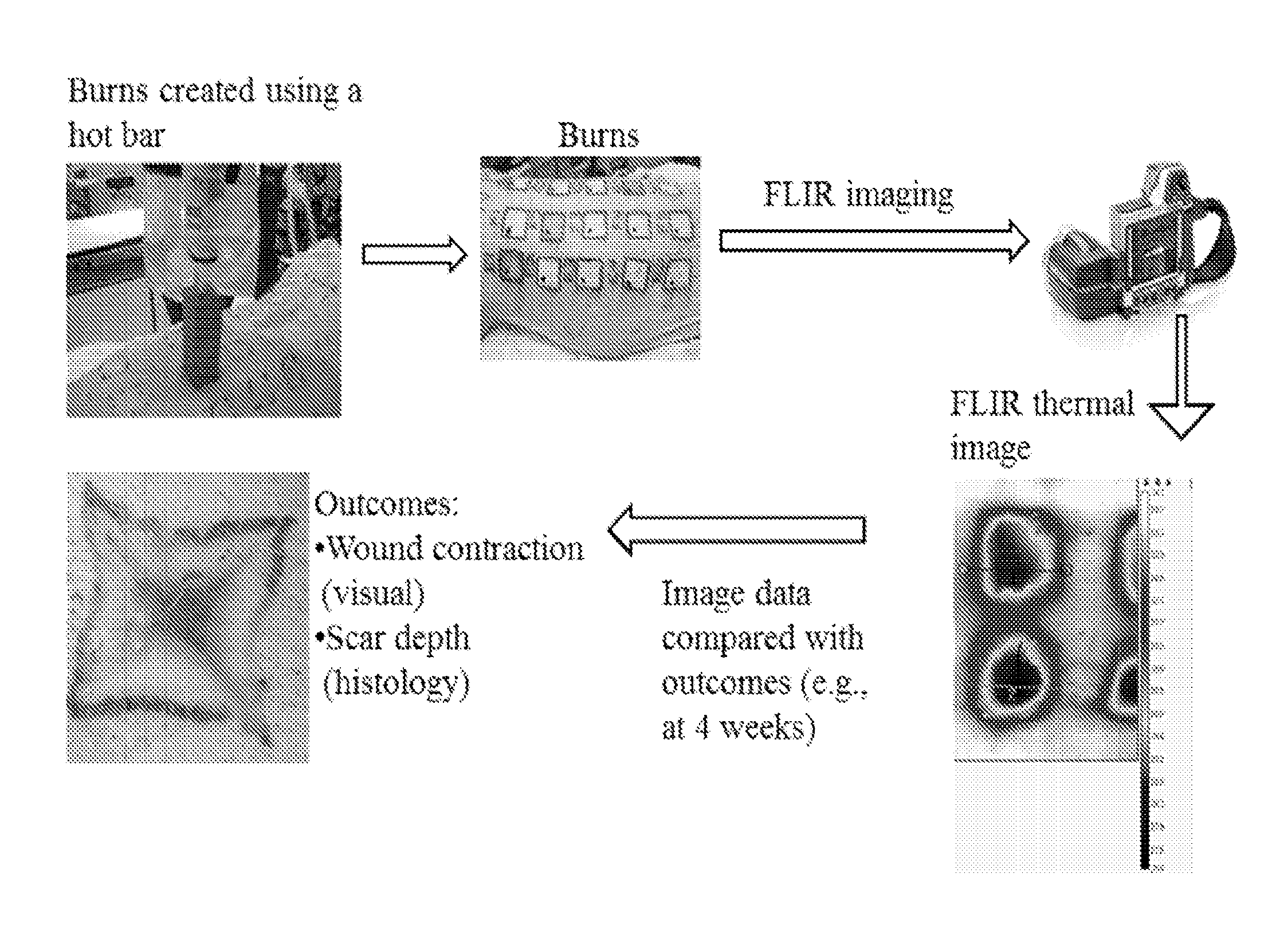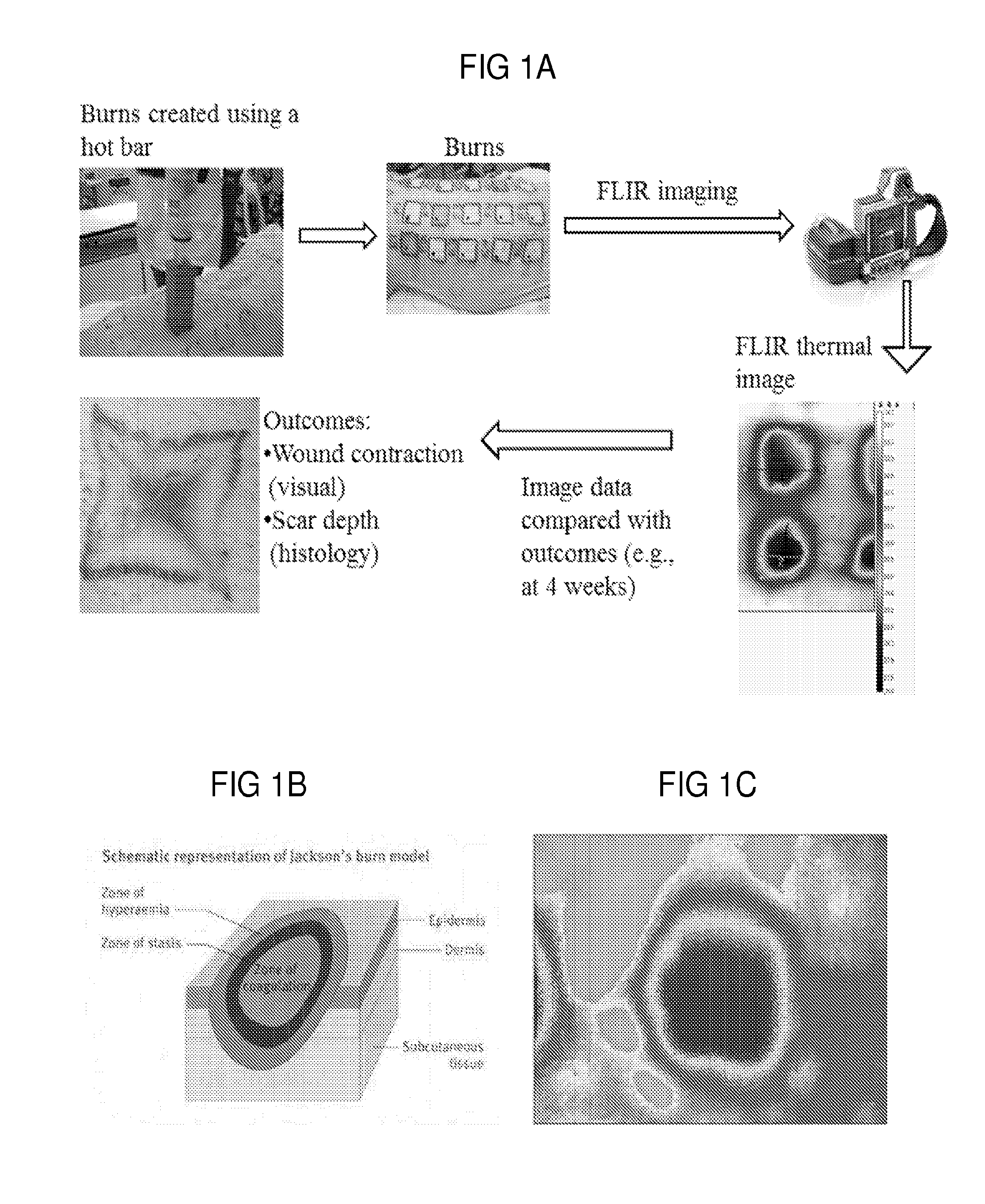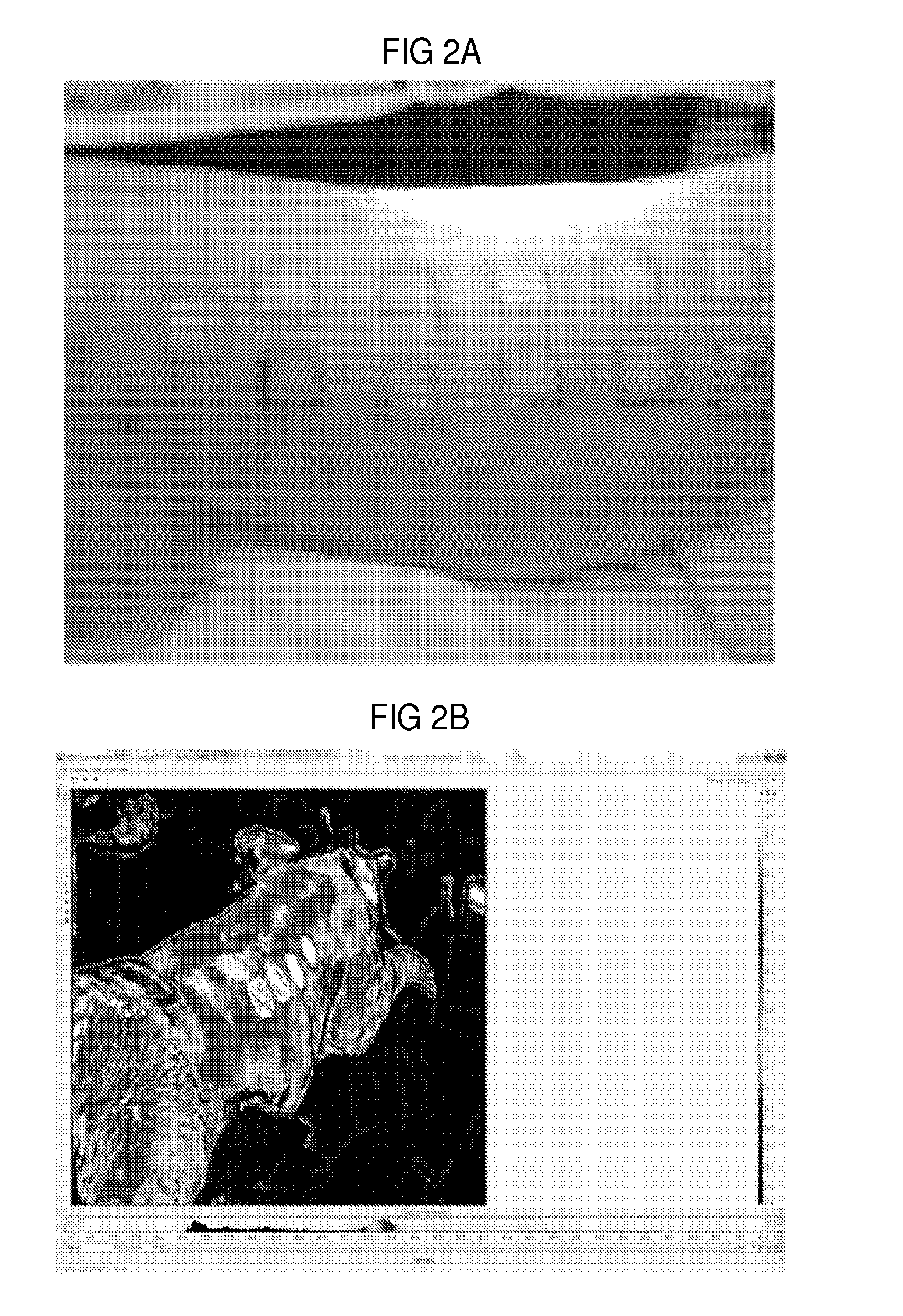Methods for evaluating tissue injuries
a tissue injury and tissue technology, applied in the field of tissue injury evaluation, can solve the problems of difficult visual determination, burns without regular or symmetrical geometric shapes, pressure wave injury, etc., and achieve the effect of intense treatment and more effective treatmen
- Summary
- Abstract
- Description
- Claims
- Application Information
AI Technical Summary
Benefits of technology
Problems solved by technology
Method used
Image
Examples
Embodiment Construction
[0053]In some embodiments, aspects of the invention relate to methods and devices for evaluating tissue injuries by analyzing emission spectra and / or emission levels (e.g., near IR, mid IR, far IR, or a combination thereof) from injured tissue. In some embodiments, aspects of the invention relate to methods and devices for detecting or evaluating tissue conditions (e.g., diseases or disorders) by analyzing emission spectra and / or emission levels (e.g., near IR, mid IR, far IR, or a combination thereof) from a target tissue (e.g., skin) suspected of having a disease or disorder. In some embodiments, infrared emissions from a tissue region can be used to evaluate the presence and / or extent of an injury or condition of the tissue region. According to aspects of the invention, the level of infrared emission from a tissue is affected by physical changes in the tissue that can be caused by injury or condition. In some embodiments, an injury is a burn. In some embodiments, an injury is a t...
PUM
 Login to View More
Login to View More Abstract
Description
Claims
Application Information
 Login to View More
Login to View More - R&D
- Intellectual Property
- Life Sciences
- Materials
- Tech Scout
- Unparalleled Data Quality
- Higher Quality Content
- 60% Fewer Hallucinations
Browse by: Latest US Patents, China's latest patents, Technical Efficacy Thesaurus, Application Domain, Technology Topic, Popular Technical Reports.
© 2025 PatSnap. All rights reserved.Legal|Privacy policy|Modern Slavery Act Transparency Statement|Sitemap|About US| Contact US: help@patsnap.com



